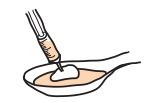Reduce your risk of infections, disease and overdose
On this page: |
You and safer injecting
Injecting is the riskiest way to use drugs. Some of the risks are related to using needles. Other risks are related to the type of drugs that go in the needles. Here are things you can do to reduce those risks.
Before you start...
Know your dealer. It's best to choose someone you feel safe with, who is experienced and who knows about the drugs they sell.
Find a buddy. Or use overdose prevention or supervised consumption sites. Using alone means no one will be there to help you if you overdose.
Find a safe, quiet place. Being relaxed and not in a hurry can make injecting easier and therefore safer.
Clean your hands and the injection site. Use soap and water to wash your hands and wipe the injection site with an alcohol swab. This will help prevent germs from going into your blood.
Be prepared for overdose. If you choose to use alone, ask someone to check on you. Have naloxone on hand.
-
Your neck is the riskiest place to inject.
-
Rotating your injection site can reduce your risk of infection.
-
Abscesses can happen anywhere on the body, not just where you inject.
If you're crushing and adding water to a drug...
Use a sterile, disposable cooker (spoon) to mix and heat the drug. Avoid re-using and sharing cookers since this can lead to contamination and infection.
Use as small an amount as possible of acidic solution. It's best to use vitamin C packs. Avoid lemon juice and vinegar because they damage veins.
Use a clean capped needle for mixing and dissolving. Uncapped needle tips can be damaged if used for mixing.
Use sterile water, if possible. Or boil tap water for five minutes and then let it cool.
When injecting...
Plump up the vein with a warm compress. Heat makes it easier to see and use a vein.

Use a tie that you can undo quickly and easily. Use a non-latex tourniquet or tie two condoms together and do not share it. Pump up the vein by opening and closing a fist.

Use a clean filter. Dental cotton is best. Avoid using cigarette filters. Use one filter per needle and don't share it with others.
Use a new sterile needle each time. Used needles may be dull, making them hard and painful to use. Avoid infection and disease by not sharing needles.
Start with a small amount if you're not sure how strong it is. This can help reduce your risk of overdose.
Start with veins lower on the arm and work your way up. This way, if the bottom part of the vein collapses, you can still use the upper part.

Insert needle with bevel (hole) pointing up. This helps with flow and reduces risk of vein damage.
Aim in the direction of blood flow. Go towards the heart.

Flag the needle. Push plunger in a little and then pull back until you see blood in needle. This way you know your needle is in right.
Release tie and inject slowly. This allows easy flow into the body.
Add pressure to injection site. This prevents bleeding and bruising.
Dispose of needle safely. It's best to put it in a container with a lid.
Signs of Overdose
For Opioids...
Feels like:
-
can't stay awake
-
no energy or strength
-
can't walk or talk
Looks like:
-
slow or no pulse
-
slow or no breathing
-
snoring, gurgling sounds, choking
-
pale, cool skin
-
blue lips or nails
-
can't wake up or talk
-
tiny pupils
-
vomiting
For Crack/Meth...
Feels like:
-
heart is pumping fast
-
short of breath
-
hot, sweaty and shaky
-
chest pain
-
nausea
-
faintness
Looks like:
-
fast or no pulse
-
fast or no breathing
-
hot and sweaty skin
-
confusion, anxiety
-
unconscious
-
vomiting
-
seizures
If someone ODs...
It is important to recognize the early symptoms of an overdose and seek medical assistance.
-
Call 911
-
Try to wake the person up
-
Use naloxone (if trained)
-
Naloxone will not work for stimulant overdose (but will not harm)
-
Stay with the person
-
Overdose may return and more naloxone may be needed
-
Roll the person on their side (if unconscious)
Safer injecting products
Visit the Toward the Heart website www.towardtheheart.com for information about obtaining needles, filters, sterile water, alcohol swabs, acidifiers, cookers and naloxone.
Getting help
Self-help tools:
Alcohol and Drug Information and Referral Service:
-
1-800-663-1441 (BC)
-
604-660-9382 (Greater Vancouver)
About the author

The Canadian Institute for Substance Use Research, formerly CARBC, is a member of the BC Partners for Mental Health and Substance Use Information. The institute is dedicated to the study of substance use in support of community-wide efforts aimed at providing all people with access to healthier lives, whether using substances or not. For more, visit www.cisur.ca.
